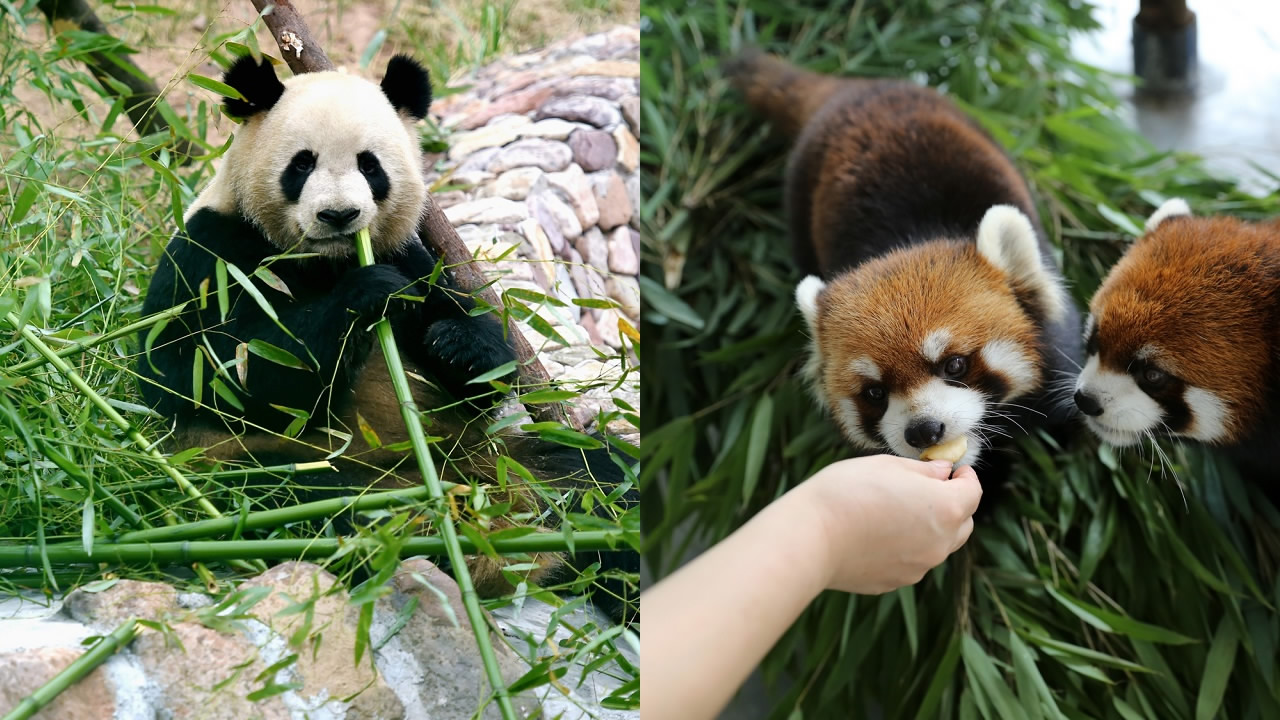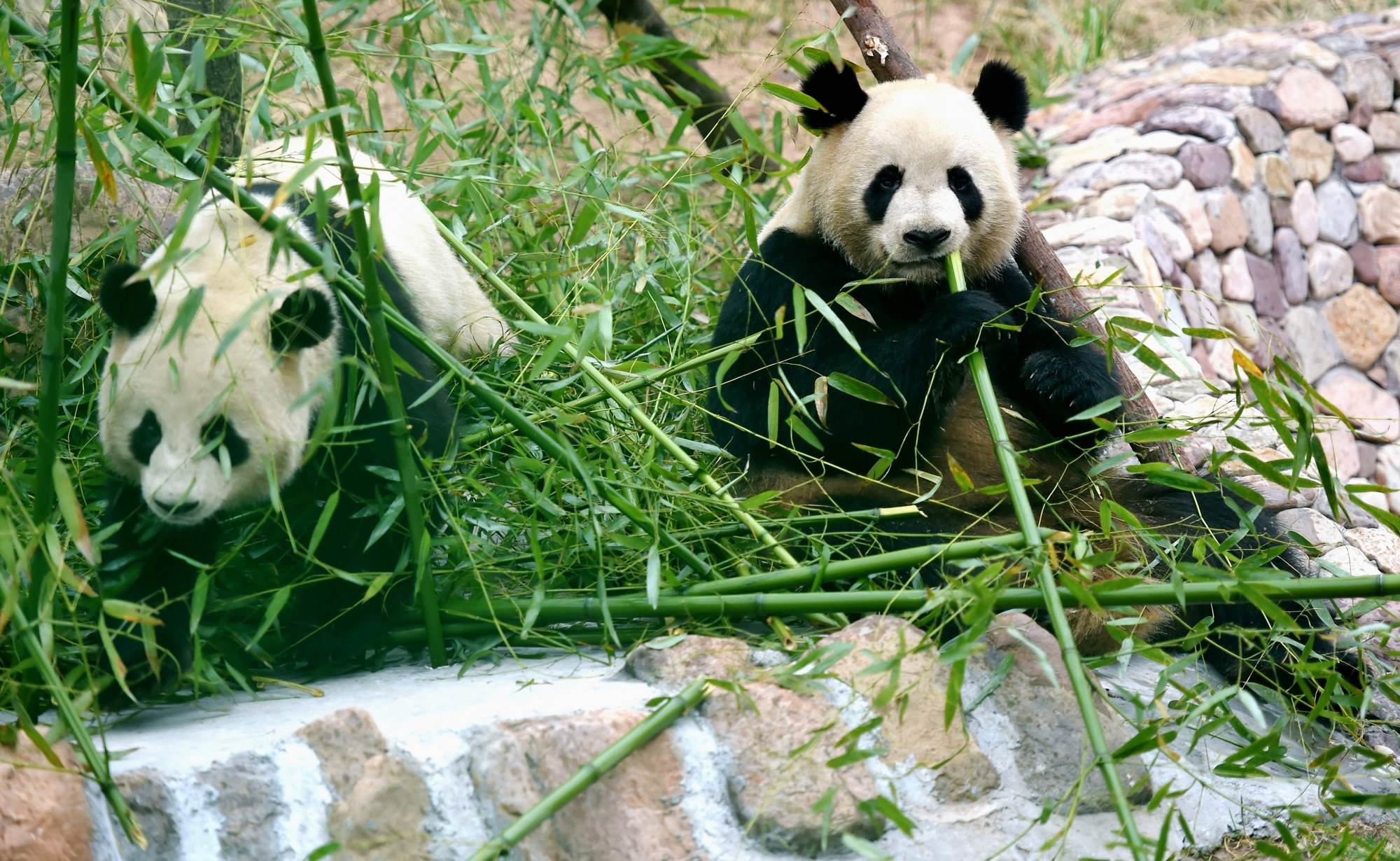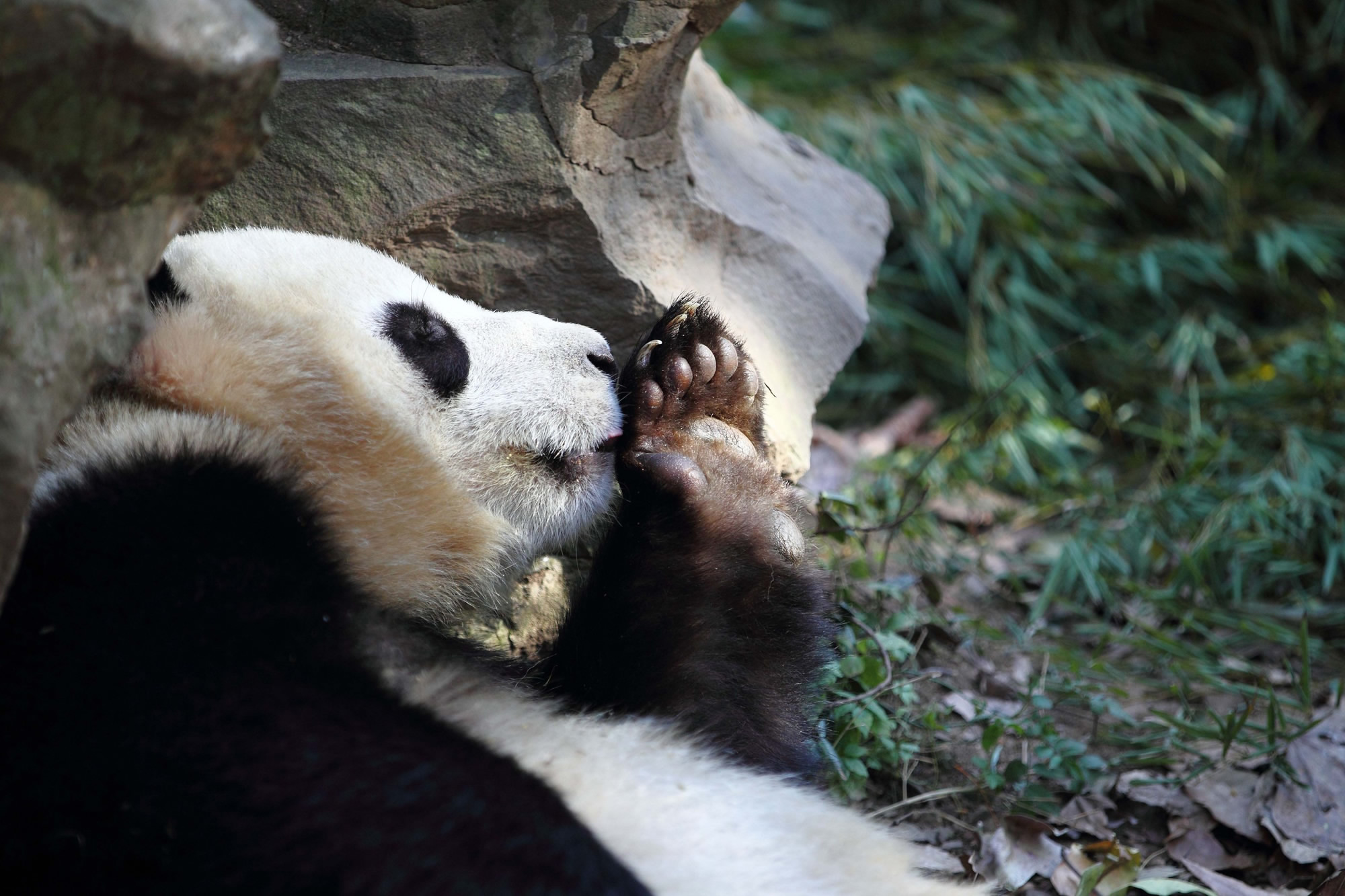
Tech & Sci
12:31, 17-Jan-2017
Why did giant pandas and red pandas both evolve to eat bamboo?
Updated
10:35, 28-Jun-2018

Chinese researchers said on Monday they have unravelled the genetic clues that prove why giant pandas and red pandas have evolved independently, but share unique features such as a bamboo-based diet and a "false thumb."
Despite being classified as carnivores, both giant pandas and red pandas, species which separately evolved from meat-eating ancestors and diverged from each other more than 40 million years ago, subsist almost entirely on bamboo - a phenomenon termed convergent evolution, where similar traits arise in two unrelated or distantly related species.
Additionally, both species possess a false thumb, which enables the animals to adroitly grasp bamboo.

Giant pandas eat bamboo in central China's Henan Province in March, 2016. /CFP Photo
Giant pandas eat bamboo in central China's Henan Province in March, 2016. /CFP Photo

Red pandas get fed in southwest China's Chongqing in September, 2016. /CFP Photo
Red pandas get fed in southwest China's Chongqing in September, 2016. /CFP Photo
To uncover the genetic basis of such a convergence, Wei Fuwen and colleagues from the Institute of Zoology, part of the Chinese Academy of Sciences, sequenced the genome of a wild male red panda and compared it with the reassembled genome of the giant panda. Their findings were published in the recent issue of US journal Proceedings of the National Academy of Sciences.
The results confirmed that giant pandas belong to the family Ursidae together with polar bears, whereas red pandas belong to the superfamily Musteloidea, together with species like otters and ferrets. The two species separated 47.5 million years ago, slightly earlier than a previous molecular-based estimate of 43 million years ago.

A giant panda licks its palm in a zoo in eastern China's Zhejiang on December 17. /CFP Photo
A giant panda licks its palm in a zoo in eastern China's Zhejiang on December 17. /CFP Photo
Giant and red panda genomes also share 10 pseudogenes, or "false" genes, which look like real genes but have no apparent function.
Notably, the TAS1R1 gene, which enables carnivores to taste meat's umami flavor, has been pseudogenized in both pandas, reflecting the animals' shift from carnivorous to omnivorous and, ultimately, herbivorous.
"Our findings provide rich insights into genetic convergence mechanisms underlying phenotypic convergence and adaptation to a specialized bamboo diet in both pandas," the researchers wrote in their paper.
(Source: Xinhua)

SITEMAP
Copyright © 2018 CGTN. Beijing ICP prepared NO.16065310-3
Copyright © 2018 CGTN. Beijing ICP prepared NO.16065310-3